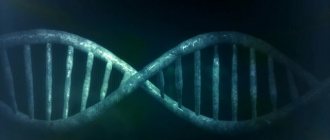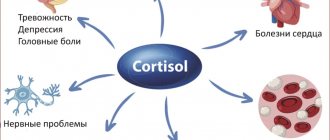Causes
DIC is not a separate disease; it occurs after certain actions. The most common causes of internal combustion engine:
- acute infections;
- different types of shock;
- injuries, including from surgery;
- cancer;
- disorders during pregnancy and childbirth;
- diseases of the heart and blood vessels, inflammation of internal organs.
It follows from this that the threat of the syndrome exists in most serious illnesses and terminal conditions (resuscitation actions).
Treatment of DIC syndrome
Therapy for DIC syndrome is carried out by a doctor who has encountered this pathology (that is, the attending physician) together with a resuscitator. In the chronic course of DIC syndrome, its treatment is carried out by a therapist and a hematologist.
First of all, it is necessary to eliminate the cause of DIC syndrome. For example, for sepsis, antibacterial and transufusion (intravenous infusion of blood products) therapy is prescribed, for traumatic shock - adequate pain relief, immobilization, oxygenation and early surgical intervention. Or for tumor diseases - chemotherapy and radiotherapy, for myocardial infarction - relief of pain, restoration of heart rhythm and hemodynamics, for obstetric and gynecological pathologies, radical measures (hysterectomy, cesarean section).
Restoration of hemodynamics and rheological properties of blood is carried out through infusion-transfusion infusions.
An infusion of fresh frozen plasma is indicated, which not only restores the volume of circulating blood, but also contains all coagulation factors.
Crystalloid (saline, glucose) and colloid solutions (polyglucin, rheopolyglucin) in a 4/1 ratio and protein blood products (albumin, protein) are also administered.
A direct anticoagulant is prescribed - heparin. The dose of heparin depends on the stage of DIC syndrome (in phases 1–2 it is significant). In case of significant anemia, fresh (no more than 3 days) red blood cells are transfused.
In the treatment of severe generalized DIC, fibrinogen and blood clotting factor concentrates (cryoprecipetate) are used. Proteolysis inhibitors - antiproteases - are used to suppress tissue proteases that are released when cells are damaged (contrical, trasylol, gordox). Corticosteroids (hydrocortisone, dexamethasone) are also prescribed, as they increase blood clotting.
In parallel, the fight against multiple organ failure is being carried out (supporting the functions of the lungs, kidneys, gastrointestinal tract, adrenal glands). In phases 2–4 of DIC, a mixture of aminocaproic acid, dry thrombin, sodium ethamsylate and adroxon is used to restore local hemostasis. This mixture is introduced into the abdominal cavity through drainages, orally, in the form of tampons into the uterine and vaginal cavity, and wipes moistened with the solution are applied to the wound.
The entire process of intensive therapy takes 1–5 days (depending on the severity of DIC), and subsequent treatment continues until complete or almost complete recovery of all multiple organ disorders.
Symptoms
DIC syndrome is divided into several forms:
- Acute (duration from several hours to several days, occurs during injuries, sepsis, operations, blood transfusions).
- Subacute (lasts up to several weeks, occurs against the background of chronic infections, autoimmune diseases).
- Chronic (duration up to several years, occurs with severe heart disease, vascular disease, lung disease, kidney disease, diabetes mellitus).
- Recurrent.
- Latent.
- Lightning fast (develops in a matter of minutes, most often during pregnancy and childbirth).
In DIC syndrome, the main damage occurs to organs with a developed network of capillaries (lungs, skin, brain, etc.). The signs of the disease are most noticeable on the skin. The manifestations are as follows:
- specific rash;
- necrosis.
- Other symptoms:
- dyspnea;
- pulmonary edema;
- impaired urine production;
- acute renal failure;
- neurological disorders;
- numerous bleedings.
Disseminated intravascular coagulation syndrome (DIC) is a condition characterized by disturbances in the blood coagulation system. In this case, depending on the stage of DIC, multiple thrombi (blood clots) form in the vessels of various organs or bleeding occurs.
The blood coagulation system includes platelets and coagulation factors (specific proteins and inorganic substances). Normally, blood clotting mechanisms are activated when there is a defect in the vessel wall and bleeding. As a result, a thrombus (blood clot) forms, which clogs the damaged area. This protective mechanism prevents blood loss due to various injuries.
Disseminated intravascular coagulation syndrome occurs against the background of other serious diseases (for example, complications during childbirth and pregnancy, severe injuries, malignant tumors and others). At the same time, a significant amount of coagulation factors is released from damaged tissues, which leads to the formation of multiple blood clots in various organs and tissues. This impedes blood circulation in them and, as a result, causes their damage and dysfunction.
A large number of blood clots leads to a decrease in the number of blood clotting factors (they are consumed during the formation of blood clots). This reduces the blood's ability to clot and leads to bleeding (hypocoagulation stage).
DIC syndrome is a serious complication and threatens the patient's life. It is necessary to carry out urgent therapeutic measures aimed at treating the underlying disease (against the background of which DIC syndrome occurred), preventing the formation of new blood clots, stopping bleeding, restoring the deficiency of coagulation factors and blood components, and maintaining impaired body functions.
Synonyms Russian
Consumption coagulopathy, defibration syndrome, thrombohemorrhagic syndrome.
English synonyms
Disseminated intravascular coagulation, consumption coagulopathy, defibration syndrome.
Symptoms
Symptoms of disseminated intravascular coagulation syndrome depend on the stage of the disease.
At the stage of increased blood clotting, multiple blood clots form in various organs.
With blood clots in the vessels of the heart and lungs, these and other symptoms may occur:
- chest pain (can spread to the left arm, shoulder, back, neck, jaw, upper abdomen);
- dyspnea;
- feeling of lack of air;
- cold sweat;
- nausea;
- vomit.
Signs of blood clots in the veins of the legs:
- leg pain;
- redness;
- heat;
- swelling.
With thrombosis of cerebral vessels, acute cerebrovascular accident (stroke) can develop. He is accompanied by:
- headache;
- loss of consciousness;
- nausea, vomiting;
- speech disorders;
- muscle weakness or immobility of an arm or leg on one side;
- muscle weakness or immobility on one side of the face;
- numbness predominantly on one side of the body.
The formation of blood clots in the vessels of other organs (for example, kidneys) leads to their damage and dysfunction (renal failure).
The amount of blood clotting factors gradually decreases, as they are consumed in the process of forming multiple blood clots. As a result, DIC enters the stage of hypocoagulation (reduced blood clotting). This may cause bleeding.
Symptoms of internal bleeding (into various internal organs and tissues):
- blood in the urine - as a result of hemorrhage in the bladder, kidneys;
- blood in stool – bleeding in the gastrointestinal tract (for example, in the stomach, small intestine);
- severe headache, loss of consciousness, convulsions and other manifestations - with hemorrhage in the brain.
Symptoms of external bleeding:
- prolonged bleeding even from minimal skin lesions (for example, from the injection site);
- bleeding from the nose, gums;
- prolonged heavy menstrual bleeding in women;
- pinpoint hemorrhages on the skin (petechiae).
Thus, the manifestations of disseminated intravascular coagulation syndrome are diverse and depend on the stage of DIC syndrome and the predominant damage to certain organs.
General information about the disease
Disseminated intravascular coagulation syndrome is a disorder in the blood coagulation system that develops against the background of various serious diseases.
The reasons for the development of DIC syndrome may be:
- complications during pregnancy and childbirth (for example, placental abruption, fetal death, severe blood loss and others);
- sepsis is a serious disease in which the infection circulates in the blood and spreads throughout the body;
- severe injuries, burns, in which a large amount of substances from destroyed cells enter the bloodstream, the endothelium (the inner wall of blood vessels) is damaged; these and other mechanisms can cause activation of blood coagulation processes;
- malignant tumors - the mechanism of development of disseminated intravascular coagulation in malignant tumors has not been fully studied; according to researchers, some types of malignant tumors (for example, pancreatic adenocarcinoma) can release substances into the blood that activate blood coagulation processes;
- Vascular disorders – vascular diseases such as aortic aneurysm (an enlargement of a vessel that threatens to rupture) can cause a local increase in coagulation (blood clotting). Once in the bloodstream, activated coagulation factors lead to disseminated intravascular coagulation throughout the body;
- poisonous snake bites.
Thus, these conditions can cause the release of a large number of blood clotting stimulants into the blood, resulting in the formation of blood clots in the vessels of various organs. This can lead to disruption of the blood supply to the lungs, kidneys, brain, liver and other organs. In the most severe cases, severe dysfunction of several organs occurs (multiple organ failure).
Gradually, the level of blood clotting factors decreases, as they are consumed during the formation of blood clots. As a result, the blood's ability to clot is sharply reduced. This may lead to bleeding. The severity of bleeding can vary from small hemorrhages on the skin (petechiae) to massive bleeding from the gastrointestinal tract, hemorrhages in the brain, lungs and other organs.
Disseminated intravascular coagulation syndrome can be acute or chronic. In acute DIC syndrome, after a short phase of hypercoagulation (increased blood clotting), hypocoagulation (decreased blood clotting) may develop. In this case, the main manifestations will be the occurrence of bleeding and hemorrhages in various organs.
In chronic DIC, the formation of blood clots comes to the fore. Cancer is a common cause of chronic disseminated intravascular coagulation syndrome.
Disseminated intravascular coagulation syndrome is a serious complication. According to various researchers, the presence of DIC syndrome increases the risk of death by 1.5 - 2 times.
Who is at risk?
Risk groups include:
- women who have serious complications during pregnancy and childbirth (for example, placental abruption)
- patients with sepsis (a serious condition in which infection spreads through the bloodstream throughout the body)
- persons with severe injuries, burns
- persons with malignant tumors (for example, prostate adenocarcinoma)
- persons who have been bitten by poisonous snakes.
Diagnostics
Laboratory diagnostics play a key role in the diagnosis of disseminated intravascular coagulation syndrome. Determining blood coagulation parameters is also of great importance in the treatment of DIC syndrome. The following laboratory tests are carried out:
- Coagulogram. Analysis of the blood coagulation system. Blood clotting is a complex process involving many components. Assessment of coagulation parameters includes several indicators: APTT (Activated partial thromboplastin time), INR (International Normalized Ratio), prothrombin index, antithrombin III, D-dimers, fibrinogen and others. In case of DIC syndrome, a comprehensive assessment of these indicators is required. Activated partial thromboplastin time (aPTT). Shows the time it takes for a blood clot to form when certain chemicals are added to blood plasma (the liquid part of the blood). An increase in this indicator indicates hypocoagulation, that is, a decrease in the ability of blood to clot (tendency to bleed), a decrease in this indicator indicates an increased risk of thrombosis (formation of blood clots).
- Prothrombin index (PI). Prothrombin is a protein that is produced in the liver. It is a precursor to thrombin, a protein necessary for blood clotting. The prothrombin index shows the ratio of the clotting time of a healthy person's plasma to the clotting time of a patient's plasma. This indicator is expressed as a percentage. An increase in this indicator indicates increased blood clotting; a decrease indicates a decrease in the blood’s ability to form a blood clot.
- International normalized ratio (INR). An indicator of the blood coagulation system. An increase in this indicator is observed with a decrease in the ability of blood to clot. It is an important parameter when treating with drugs that affect the blood coagulation system.
- Antithrombin III. It is a natural substance that reduces blood clotting. During the thrombus formation stage, the amount of antithrombin decreases. Using this indicator, one can indirectly judge the severity of DIC syndrome.
- Fibrinogen. Fibrinogen is a protein that is necessary for the blood clotting process. During the stage of increased blood clotting in DIC syndrome, a decrease in fibrinogen levels is observed.
- D-dimers. D – dimers are one of the end products of the breakdown of fibrinogen (a protein involved in blood clotting). An increase in the level of D-dimers indicates activation of thrombus formation. The level is increased during the hypercoagulation stage of DIC syndrome.
- Thrombin time. The time it takes for fibrin (the protein needed to form a blood clot) to form a clot when an enzyme (thrombin) is added. An increase in this indicator is observed with hypocoagulation (decreased blood clotting ability).
- General blood analysis. This indicator allows you to determine the number of main blood components: red blood cells, hemoglobin, platelets, leukocytes. With DIC syndrome, there may be a decrease in the number of platelets.
Assessment of kidney and liver function:
- Serum creatinine. Creatinine is formed in the muscles and then enters the blood. Participates in metabolic processes accompanied by the release of energy. It is excreted from the body in urine through the kidneys. When kidney function is impaired, the level of creatinine in the blood increases.
- Urea in serum. Urea is the end product of protein metabolism. It is excreted from the body by the kidneys and urine. Urea levels increase when kidney function is impaired.
- Alanine aminotransferase (ALT). Alanine aminotransferase is an enzyme that is found in many cells of the body, mainly in liver cells. When liver cells are damaged, this enzyme enters the blood. An increase in the level of this enzyme is observed with liver damage.
Research:
Diagnosis of DIC syndrome is based on clinical data and laboratory tests. Various studies may be necessary to diagnose the underlying disease and complications that have arisen. The need for and scope of research is determined by the attending physician.
Treatment
Treatment tactics for disseminated intravascular coagulation syndrome depend on the causes of its occurrence, the severity of the patient’s condition and other factors.
Acute disseminated intravascular coagulation syndrome is a serious condition that threatens the patient's life and requires intensive treatment measures. Treatment can be aimed at eliminating the causes that caused DIC syndrome (the underlying disease), preventing the formation of blood clots in the vessels, stopping bleeding, restoring the normal volume of blood and its components. To do this, transfusions of fresh frozen plasma (the liquid part of blood taken from a donor), blood components, intravenous administration of various solutions, drugs that affect blood clotting, and other medications can be used.
Prevention
There is no specific prevention of disseminated intravascular coagulation syndrome.
Recommended tests
- Coagulogram No. 3 (PI, INR, fibrinogen, ATIII, APTT, D-dimer)
- Thrombin time
- General blood analysis
- Serum creatinine
- Urea in serum
- Alanine aminotransferase (ALT)
Literature
- Dan L. Longo, Dennis L. Kasper, J. Larry Jameson, Anthony S. Fauci, Harrison's principles of internal medicine (18th ed.). New York: McGraw-Hill Medical Publishing Division, 2011. Chapter 116. Coagulation Disorders. Disseminated Intravascular Coagulation.
- Mark H. Birs, The Merk Manual, Litterra 2011. Chapter 17, p. 694. Disseminated Intravascular Coagulation.
Diagnostics
The clinical picture plays an important role in making a diagnosis. With serious damage to internal organs, the diagnosis is obvious. But in subacute and chronic forms, the symptoms are not so bright.
In addition to the clinical picture, clinical research data are important to establish a diagnosis:
- general blood test;
- general urinalysis;
- coagulograms (testing blood for clotting);
- blood smear analysis;
- enzyme immunoassay (search for possible infections).
- Internal organs are also examined for damage.
Blood coagulation system
The figure shows a rather complex diagram of blood coagulation. The numbers and most common names of coagulation factors are presented in the table
International nomenclature of plasma coagulation factors (according to Z.S. Barkagan)
| Digital designation | Most common names |
| I | Fibrinogen |
| II | Prothrombin |
| III | Tissue thromboplastin, tissue factor |
| IV | Calcium ions |
| V | Ac-globulin, proaccelerin, labile factor |
| VII | Proconvertin, stable factor |
| VIII | Antihemophilic globulin |
| IX | Plasma component of thromboplastin, Christmas factor, antihemophilic factor B. |
| X | Stewart-Prouser factor, prothrombinase |
| XI | Plasma precursor of thromboplastin |
| XII | Hageman factor, contact factor. |
| XIII | Fibrin stabilizing factor |
There are two different mechanisms for activating blood clotting. One is designated as an external mechanism, since it is triggered by the entry of tissue factor (factor III) from tissues or from blood leukocytes. When interacting with factor VII, factor X is quickly activated, which transforms prothrombin (II) into thrombin (IIa), and thrombin, in turn, converts fibrinogen (I) into fibrin (Is). The second activation pathway is called internal, it begins with the activation of factor XII. This occurs due to various reasons - blood contact with a damaged vascular wall, with altered cell membranes, under the influence of adrenaline or proteases. Next, the process follows a cascade as can be seen in the figure, in the end, prothrombin turns into thrombin, which in turn converts fibrinogen into fibrin and a blood clot is formed.
The hemostasis system is self-regulating; activation of the coagulation system immediately activates the anticoagulation system and the fibrinolysis system.
Prevention
Preventive measures are associated with identifying the risk group (people with low levels of antithrombin III, erythrocytosis). The risk group also includes people with chronic diseases (diabetes mellitus, pyelonephritis, etc.), the elderly, etc.
A successful result in the treatment of DIC syndrome depends entirely on the experience of medical personnel and doctors, as well as on the speed of their reaction. Remember that only qualified specialists are able to provide the necessary assistance for DIC syndrome. Contact the SM-Clinic in St. Petersburg for treatment.
Hemostasis system
Vascular-platelet hemostasis is one of the systems that implements hemostasis in the body, i.e. ensures the preservation of the liquid composition of the blood, prevents bleeding or stops it by maintaining the structural integrity of the walls of blood vessels and their rapid thrombosis in case of damage.
The walls of blood vessels play an important role in maintaining normal hemostasis. The vascular endothelium synthesizes and secretes a powerful inhibitor of platelet aggregation - prostacyclin; fixes a number of natural anticoagulants on its surface and produces fibrinolysis activators. Stopping bleeding is ensured by the production of factors by endothelial cells aimed at the formation of a blood clot - von Willebrand factor, collagen. The platelet factor is closely related to the vascular factor. Platelets influence hemostasis processes in four directions. Firstly, they have angiotrophic function and support the normal structure and function of microvascular endothelial cells. With a decrease in the number of platelets and disturbances in their function, the permeability of the vascular wall to red blood cells sharply increases. Secondly, at the slightest damage to the vascular wall, platelets stick to the damaged area (adhesion) and contribute to the organization of platelet aggregates; thromboxane, a metabolite of arachidonic acid synthesized in platelets, is actively involved in this process. Thirdly, platelets support vascular spasm, which naturally develops when they are damaged. Fourthly, platelets directly activate the blood coagulation system by producing a number of factors, and also influence the fibrinolysis system.
All factors of the anticoagulant system - anticoagulants - can be divided into two groups: 1) physiological anticoagulants, formed independently of blood coagulation and fibrinolysis; 2) formed during the process of proteolysis, secondary.
Group I includes antithrombin III, heparin, alpha-1-antitrypsin, alpha-2-macroglobulin and some others. The most universal of them is antithrombin. The second group includes antithrombin I, fibrinogen degradation products.
Activation of blood coagulation inevitably causes an increase in anticoagulant mechanisms. The exact mechanisms of activation of anticoagulant factors are not fully understood.
Fibrin lysis in the body is carried out by the fibrinolytic or plasmin system. Its main component is fibrinolysin or plasmin, which is contained in plasma in the form of the proenzyme plasminogen. In addition, there is a system of non-enzymatic fibrinolysis.
General provisions, etiological factors
The term DIC syndrome denotes a nonspecific general pathological process, which is based on diffuse diffuse blood coagulation in microvessels with the formation of many microclots and aggregates of blood cells, blocking blood circulation in organs and the development of deep degenerative changes in them.
List of diseases and conditions often complicated by DIC syndrome:
- Malignant (solid) neoplasms of various localizations.
- Carcinoid, neuroblastoma.
- Rhabdomyosarcoma.
- Acute promyelocytic leukemia.
- Erythremia.
- Chronic egakaryocyte leukemia.
- Intravascular hemolysis.
- Sickle cell anemia (crisis).
- Histiocytosis.
- Septic abortion.
- Placental abruption.
- Amniotic fluid embolism.
- Intrauterine fetal death.
- Ectopic pregnancy.
- Severe eclampsia.
- C-section.
- Conflict between mother and fetus in the AB0 and Rh systems.
- Aneurysms.
- Coarctation of the aorta.
- Kasabach-Merritt angiomatosis (multiple and giant angiomas).
- Takayasu aortitis.
- Surgical angioplasty.
- Congenital “blue” heart defects.
- Immune complex diseases (vasculitis).
- Pulmonary embolism.
- Hemolytic-uremic syndrome.
- Myocardial infarction.
- Sepsis.
- Shock (traumatic, hemorrhagic, burn,
- anaphylactic, septic).
- Massive tissue damage (crush syndrome, traumatic surgical operations).
- Homologous blood syndrome.
- Transfusion of incompatible blood.
- Exicosis.
- Fat embolism.
- Hemoperfusion (on carbon filters).
- Poisoning and intoxication (snake hell, medicines).
- Acidosis, hypoxia.
- Acute pancreatitis.
- Hyperlipidemia.
- Amyloidosis.
- Acute and chronic liver diseases.
- Viral infections (herpes, rubella, smallpox, cytomegalovirus).
- Hemorrhagic fever.
- Malaria.
Helminthic infestation (kara-azar). Etiological factors and disorders causing DIC syndrome (according to RIHandin)
| Groups of etiological factors | Pathological conditions |
| Release of tissue factors | Obstetric pathology (placental abruption, amniotic fluid embolism, intrauterine fetal death, abortion in the second trimester of pregnancy. Hemolysis Tumors Fat embolism Tissue damage (burns, frostbite, gunshot wounds) |
| Endothelial damage | Aortic aneurysm Hemolytic uremic syndrome Acute glomerulonephritis Kasabach-Merritt syndrome |
| Infections | Bacterial (staphylococcal, streptococcal, pneumococcal, meningococcal, caused by gram-negative bacteria) Viral (arboviruses, smallpox, varicella, rubella viruses) Parasitic (malaria, kala-azar) Rickettsial (Rocky Mountain spotted fever) Fungal (acute histoplasmosis) |






